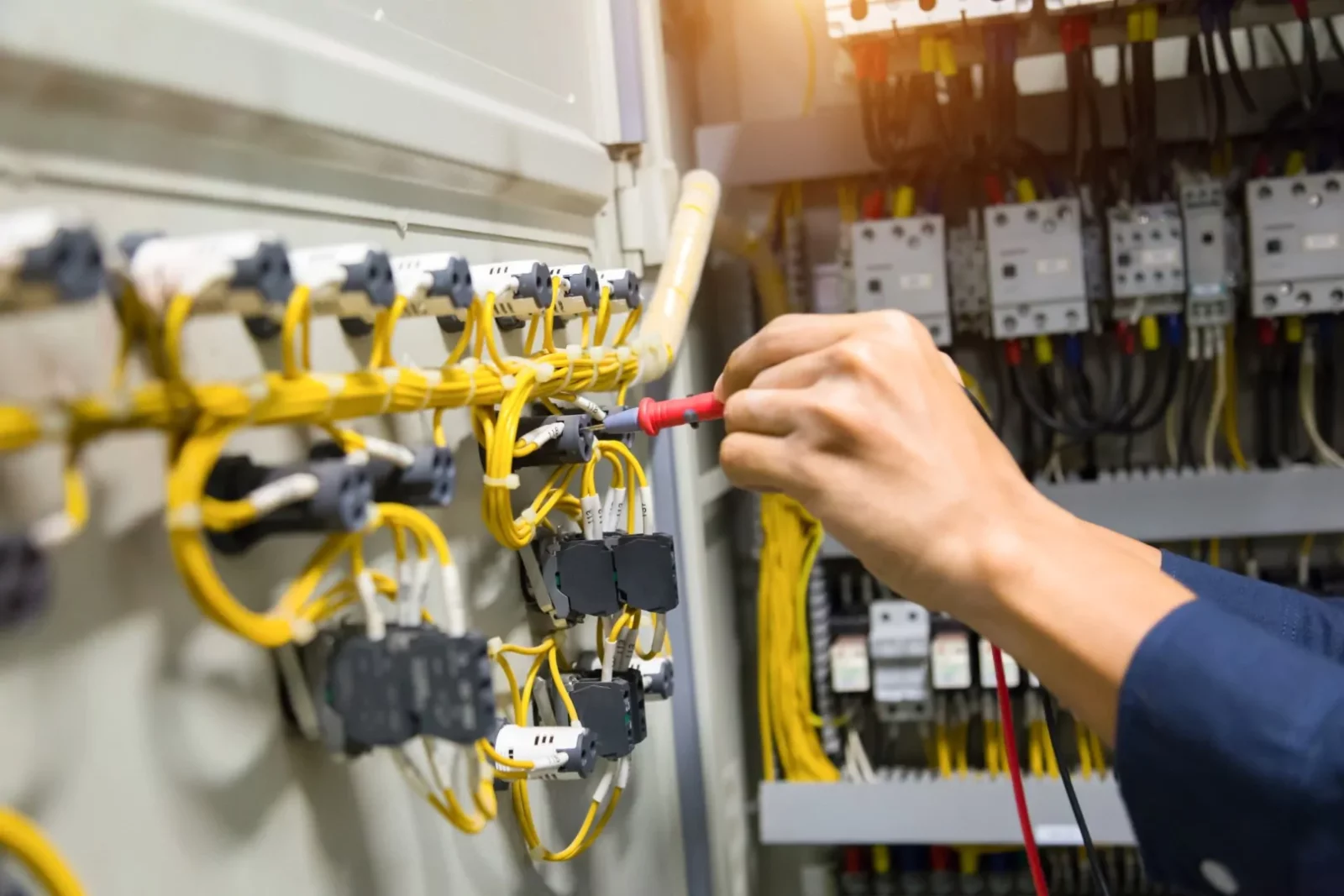Electrical Services is responsible for all power systems on the Knoxville Campus. If you are planning a service change in your home, we can assist with the process.
Electrical wires and insulation are designed to work together as a system. Try to push more current through a circuit than it’s designed for and bad things happen.
Substations
To the outside world, a substation might look like a confusing mess of wires and equipment. But inside there are clever electrical devices that control and protect each other to make our electricity supply work properly.
The main function of a substation is to change voltage from high to low or vice versa. This is done using switches called disconnects. These switches are designed specially for high voltages. They are not as simple to turn on and off as a light switch because if you do this at a high voltage, electricity will continue to flow through the air (called an arc) instead of stopping.
This can be very dangerous for anyone touching the equipment. That is why we ask you not to enter a substation site. You could be electrocuted or seriously injured. Instead, you can call us 24 hours a day to report problems with your supply. It’s free to call from landlines or mobiles.
Circuit Breakers
Circuit breakers are designed to sense current flow and prevent overheating, arcing, or fires. They can also be used to isolate and switch different parts of a power system for maintenance or control purposes. They use various arc quenching media including oil, air, SF6, and vacuums depending on their voltage level and current rating.
Once a fault condition is detected, the breaker will activate a mechanism to trigger the release of stored potential energy, which separates the contacts. The arc is quickly extinguished and the contacts return to their normal state. This allows for much quicker and more selective protection than a fuse.
One of the most common causes of a tripped breaker is an overload. This can happen when too many loads are pulling on the same circuit, causing it to exceed the safe amount of current. This can also be caused by loose connections or outdated hardware. This is why it’s important to always double-check your setup and make sure you don’t have too many loads pulling from the same circuit!
Fuse Boxes
Fuses are small, cylindrical pieces of metal that carry a certain amount of electricity. If it reaches that limit, the fuse will blow and stop the flow of electricity to whatever device it was powering. If your fuse box trips or you notice hissing and popping sounds, a hot wall around outlets, or your lights are flickering, it’s time to call an electrician.
A circuit breaker panel has switches that are labeled to identify each individual circuit. Resetting a tripped switch is as simple as flipping it back to the “on” position. The size of a breaker panel needed for a home depends on the number of fixtures being powered, so consult an electrician before installing a new one.
Meters
In many countries you need a meter to check your electricity usage for billing purposes. Normally it is supplied by the power company.
A mechanical electric meter uses two conductor coils to create magnetic fields that impact on each other causing a disc inside the meter to turn, moving the dials showing how much electricity has been consumed. Typically a meter is mounted outside on the utility pole serving your property, or in a small cabinet located next to your service entrance equipment enclosure (meter box).
Most meters now come with a digital display and have a processing and communication engine that digitises all the inputs into a data stream. The metering engine then feeds outputs to addon modules that can be used for communication and/or logging.
A common problem with a mechanical meter is that it can be tampered with in order to under register, effectively stealing power. Modern meters use special technology to detect and report tampering.







Leave a Reply